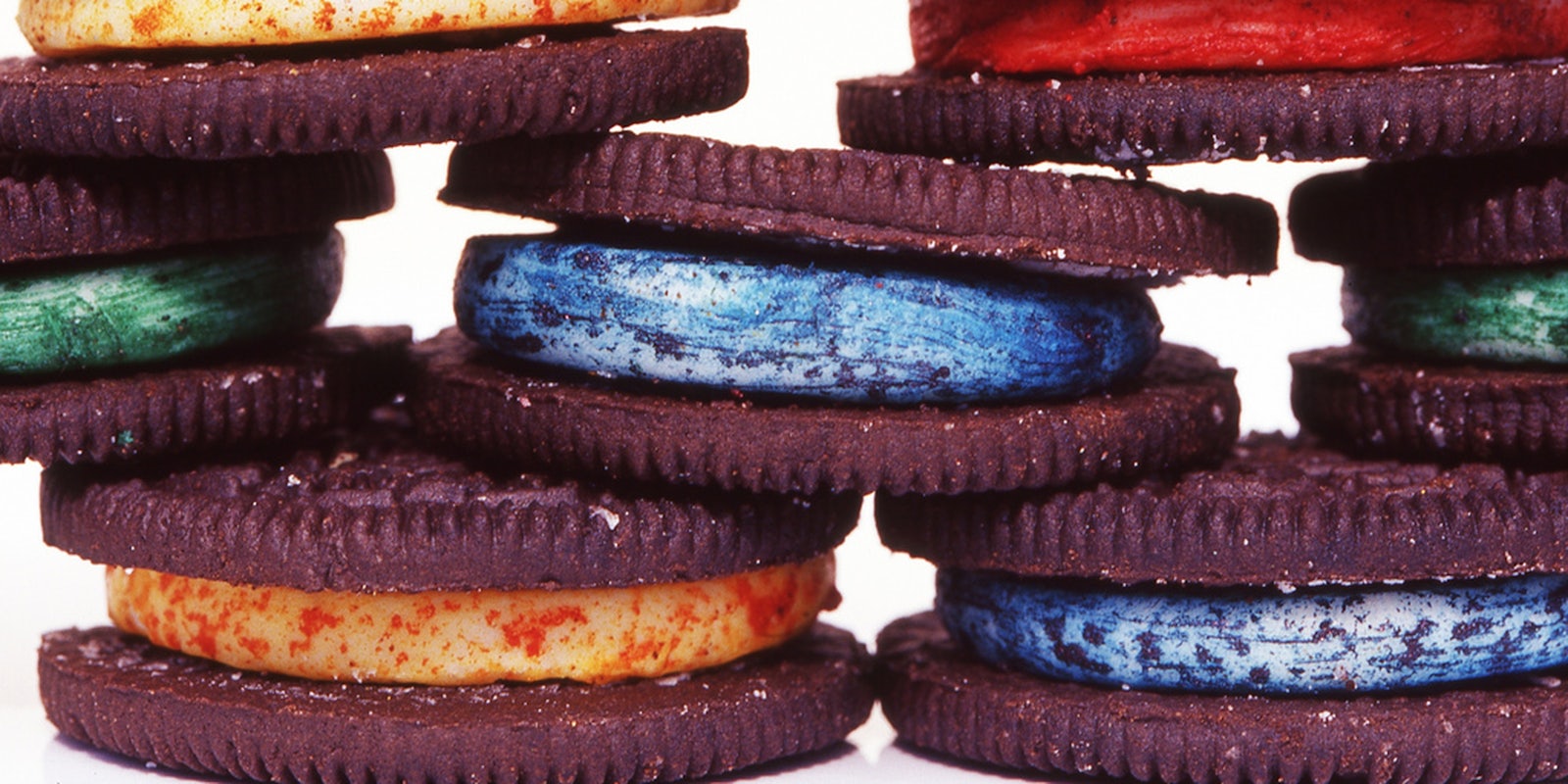BY BRAD PIKE
3-D printers can print acoustic guitars, camera lenses, working guns, the resonating chamber of a velociraptor, and now, at last, food.
The Kickstarter for Natural Machines’ Foodini, the first consumer grade food printer, recently ended, after hitting $80,000 of its $100,000 goal, a bit short of fully funded. But thanks to its massive media campaign, the momentum isn’t slowing down, and the Foodini will still be released as early as October.
According to its website, the Foodini is “the first 3-D printer to print all types of real, fresh, nutritious foods, from savory to sweet” like ravioli, quiches, and even pizza into any shape you can sculpt on a computer like, for example, a dinosaur. It also has a scanner that can scan any object and either print decorations on top of it or print a food in that object’s exact shape.
And despite the initially high price tag of $1,000, Natural Machines is looking to make it as ubiquitous a kitchen appliance as microwaves and toaster ovens.
But that’s just the start. For candy and chocolate, there’s the ChefJet, which prints chocolate and flavored candy into complex geometric designs.
Then there’s the 3-D printer funded by NASA for long spaceflights that prints pizzas from cartridge injectors filled with organic base powders derived from algae, insects and grass (yum yum!) and the 3-D printer from Bonin Bough that dispensed customizable Oreo cookies at SXSW. Patrons could, for instance, print an Oreo with chocolate and vanilla wafers stuffed with white, mint, birthday cake, and blue cream filling; a beautiful Frankenstein’s monster of a cookie previously achievable only through extensive food hacking or flights of imagination.
With such rapid development in the food-printing industry, we may soon see the technological holy grail we’ve long been advancing toward: the Star Trek food replicator. You come downstairs, say “Pancakes and eggs,” and a machine pukes it onto a plate for you. Push a button and lasagna is spewed out layer by layer using cartridges filled with protein mush.
“Mush? Spew? Puke?” you protest. “These are not words I’d associate with food.”
The rest of us who regularly eat Taco Bell, however, who consider Chef Boyardee a food group, who thought Easy Mac and Gogurt were gifts from a benevolent corporate god, are already onboard for this brave new world. I have low standards for what constitutes “food,” and organic base powders configured into a vaguely edible object just about fulfills them.
Still, every time there’s a technological innovation (degradation) involving food, the foodies—e.g. the vegan, gluten free, Whole Foods shoppers—cry out for a return to the pure, mythical food our ancient ancestors plucked from the Garden of Eden’s verdant foliage. They would drag us all, kicking and screaming, to the Hidden Valley where everyone eats salad all day if they had the muscle mass to drag a thing.
To them, the idea of a food printer just takes us further in the direction of processed food, the toxic sludge slowly murdering us via white flour and high fructose corn syrup.
I’ll admit this is a pretty legitimate argument. I’m not opposed to eating good healthy food (otherwise I’d be dead, or close to dead), but I also relish the concept of printable food, even if it’s synthesized mush, if only because it would simplify shopping and cooking.
Instead of managing the inventory of a pantry and refrigerator (checking which items have gone bad or run out), I only need to know one thing: which cartridges are low? Is it the vegetable one? OK then, I’ll go buy a toothpaste tube full of green mush to load in the printer. Mmm, mush. One person’s dystopian hellscape is another person’s printable Spongebob-shaped chicken nugget utopia.
Speaking of dystopia, I was also excited about the prospect of Soylent (a.k.a. People Kibble or “default food”) the thick brown milkshake that fulfills all nutritional needs with a third of the calories and none of the toxins or carcinogens of processed food.
It’s no accident Soylent and food printers are emerging at the same time as they are both products of a certain IT mindset, one that’s increasingly prevalent in a culture obsessed with streamlining datafeeds and “life hacking.” People want their food the way they get their movies and music: downloadable, printable, customizable, and instantaneous.
And the question of whether this is a direction we want to go with a substance we take into ourselves, the most personal and intimate of commercial goods, is really a moot point when it’s 3am and I want mashed potatoes now.
Slowly but surely, this technological approach to food brings us ever closer to the glorious sofalarity, when we no longer need to waste effort on cooking or even walking to the kitchen. How long before engineers install a tube from the food printer to your mouth, pumping gray, nutrient rich slop directly down your esophagus like a doting momma bird?
This is the Wall-E scenario, and I’m both tantalized and repulsed by the prospect. On the one hand, I’m sick of the constant low-level anxiety caused by worrying about what I’m going to eat, what’s healthy and unhealthy, and whether I have all the necessary ingredients. On the other hand, processed mush.
Fortunately, I think the all-natural and technological approaches to food can coexist, at least for the foreseeable future. The food printing technology is pretty rudimentary at this point and way too expensive for anyone other than fiscally irresponsible Monopoly men and women to afford.
Even when it comes down in price, food printing seems like it would be used primarily for food too complex to create by hand or when you’re just too exhausted to cook. It’s just another option.
Brad Pike is a writer and performer in Chicago. His writing has been featured on The Sixth Wall, Thought Catalog, The North Texas Review, and other places.
Photo via Great Beyond/Flickr (CC BY 2.0)


